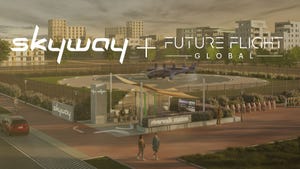Self-Destructing Robots Designed for Classified MissionsSelf-Destructing Robots Designed for Classified Missions
The design features a trigger that heats up the robot, causing it to melt and leave nothing but oily residue behind

A team of researchers from Korea has created a self-destructing soft robot that could be used to protect data in classified or dangerous missions.
The team, from Seoul National University, created a novel material that is strong enough to support a robot but can disintegrate when certain substances interact.
“On-demand degradable soft robots, which conserve their original functionality during operation and rapidly degrade under specific external stimulation, present the opportunity to self-direct the disappearance of temporary robots,” the team said.
For the design, the team used a silicone resin that releases fluoride ions when exposed to UV light, heating the material and causing it to rapidly degrade, leaving only an oily liquid behind.

Credit: Seoul National University
The robot was also fitted with a temperature sensor array, strain sensor and photodetector array, with the temperature sensor and photodetector monitoring conditions to determine when to trigger the robot’s self-destruction.
“Under certain scenarios wherein disintegration is desired, including mission completion, discovery by enemies, or disposal requiring volume reduction, the robot can be exposed to UV light and disintegrate into an unrecoverable form,” the team wrote.
“Embedding the robot with flexible electronics in the form of strain, temperature, and UV light sensors successfully provided multifunctionality for controlling robotic motion, scouting the surrounding environment, and self-diagnosing a triggerable condition to choose self-protection or self-destruction.”
Previous self-destructing robot designs had a limitation in that the time of degradation could not be selected, with many designs decomposing as soon as they interacted with their environment and the robots failing to complete a selected task.
By contrast, the team’s novel design identifies when to trigger the reaction to create “on-demand” temporary robots.
According to the team, the design could aid in exploring hazardous areas, collecting and destroying sensitive information, ensuring hardware security, as well as reducing soft robotics waste.
About the Author
You May Also Like








